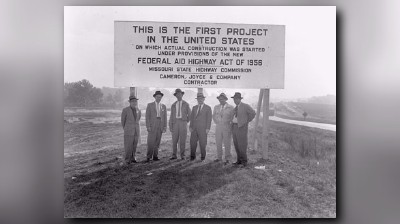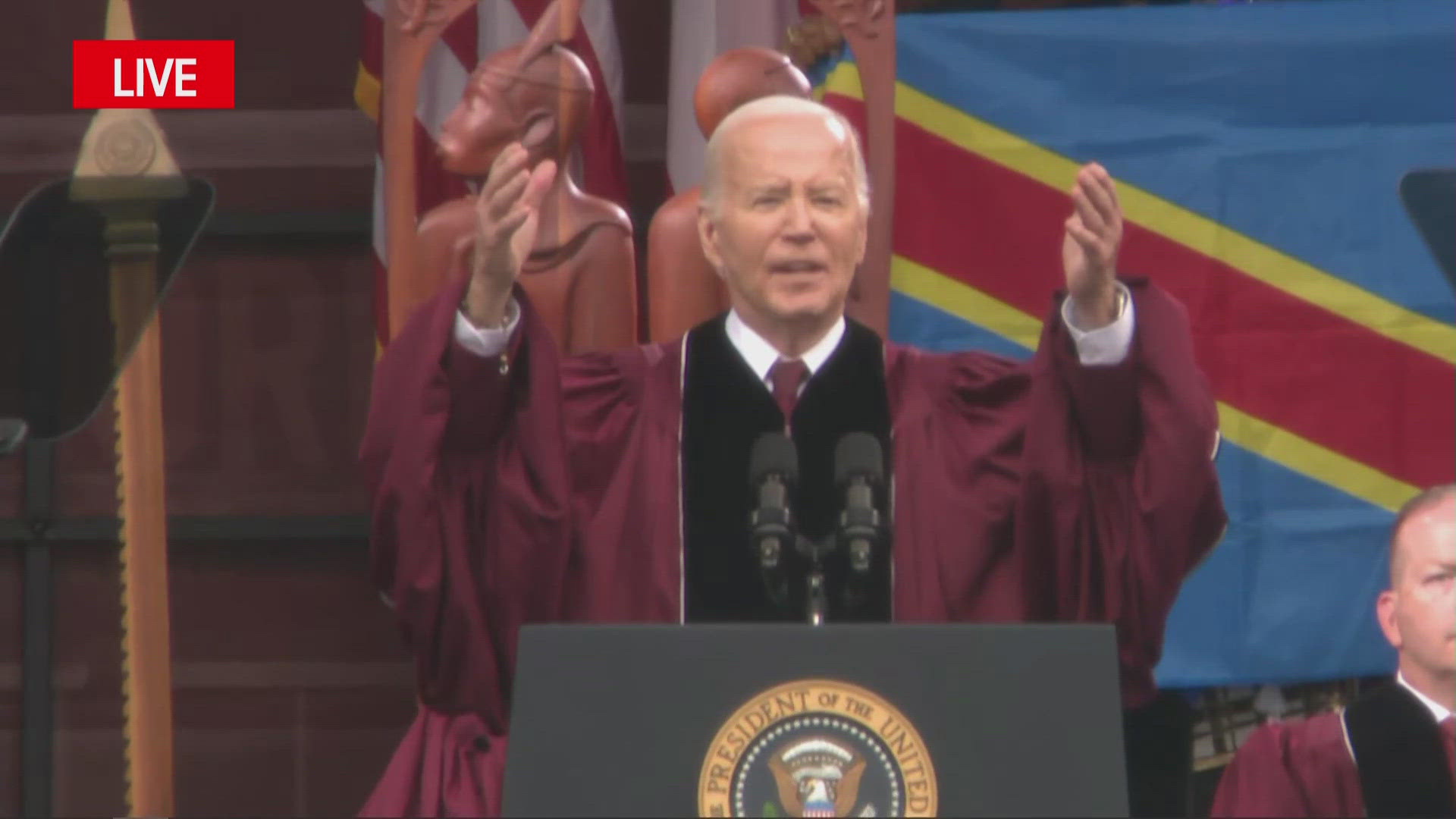Although its true genesis can be traced to a 1939 report to the US Congress, what we know of today as the Eisenhower Interstate Highway System began construction 60 years ago this week -- August 13, 1956 -- on a stretch of what was then US Highway 40, and is now Interstate 70, in St. Charles, Mo.
The original Federal-Aid Highway Act of 1956 allowed for the construction of the first 37,000 miles of Interstate highways, with highways in Missouri and Kansas being the first shovel-ready projects to get underway. Other projects soon followed.
A sign overlooking the St. Charles construction project proclaimed, "This is the first project in the United States on which actual construction was started under provisions of the new Federal Aid Highway Act of 1956."
Following enactment of the 1956 Act, the American Association of State Highway Officials (AASHO) -- precursor to today's American Association of State Highway and Transportation Officials -- asked officials from state highway agencies to suggest designs for a uniform Interstate highway sign that would be used across the nation. Several dozen were submitted, and displayed when state officials attended a national meeting in Illinois so that they could be seen in multiple conditions -- day and night.
A shield design submitted by officials in Texas was selected with a minor alteration, the addition of the word "Interstate" to the top of the shield. The final design was approved in 1957, and adopted for use across the nation.
As interstate highway construction proceeded in other states, in Georgia, upgrades of portions of US Highway 41 into Interstate 75 quickly began, followed by construction of I-85, I-95 and I-20. Other routes in Georgia, including I-16 and I-285 began to see fruition as well.

In the 1970s, many urban areas around the nation, including Atlanta, began to see urban freeway revolts, which ended interstate highway projects in many areas. In some cities, activists cited racial concerns, while in others, simply complaints of the destruction of communities themselves forced highway developers and politicians to come up with alternatives to interstate construction, or to completely eliminate highways altogether.
In Atlanta, three freeways, Interstate 420, Interstate 485 and an extended Stone Mountain Freeway, were all cancelled, as the freeway revolt became successful here. Much of the land remaining from what would have been the stack interchange between the Stone Mountain Freeway and I-485 became the land used to construct the Carter Center and Freedom Parkway.
By the end of 1978, the original system of interstates in Georgia was complete, though the major refit of Atlanta's highway system, called "Freeing The Freeways," still lay ahead for metro Atlanta motorists, with the true final completion not coming until the early 1990s, not long before the 1996 Summer Olympic Games.
As of today, the Interstate Highway System is about 47,000 miles long, and includes highways in all 50 states, the District of Columbia and Puerto Rico -- although the interstates in Alaska and Puerto Rico are not signed at the present time.
With the 21st Century, and continued population growth, new traffic patterns and innovations have come into play as new construction projects have developed along Georgia's roadways. Major developments like HOT lanes on metro Atlanta interstates and the Northwest Corridor reversible express lanes project continuing to change the face of highways for decades to come.


